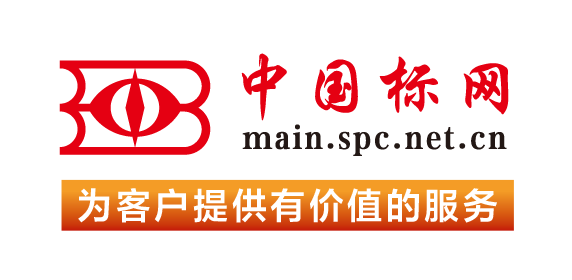5.1 Solar reflectance and thermal emittance are important factors affecting surface and near-surface ambient air temperature. Surfaces with low solar reflectance, absorb a high fraction of the incoming solar energy. A fraction of this absorbed energy is conducted into ground and buildings, a fraction is convected to air (leading to higher air temperatures), and a fraction is radiated to the sky. For equivalent conditions, the lower the emissivity of a surface the higher its steady-state temperature. Surfaces with low emissivity cannot effectively radiate to the sky and, therefore, get hot. Determination of solar reflectance and thermal emittance, and subsequent calculation of the relative temperature of the surfaces with respect to black and white reference temperature (defined as Solar Reflectance Index, SRI), may help designers and consumers to choose the proper materials to make their buildings and communities energy efficient. The method described here gives the SRI of surfaces based on measured solar reflectances and thermal emissivities of the surfaces.1.1 This practice covers the calculation of the Solar Reflectance Index (SRI) of horizontal and low-sloped opaque surfaces at standard conditions. The method is intended to calculate SRI for surfaces with emissivity greater than 0.1.1.2 The values stated in SI units are to be regarded as standard. No other units of measurement are included in this standard.1.3 This standard does not purport to address all of the safety concerns, if any, associated with its use. It is the responsibility of the user of this standard to establish appropriate safety, health, and environmental practices and determine the applicability of regulatory limitations prior to use.1.4 This international standard was developed in accordance with internationally recognized principles on standardization established in the Decision on Principles for the Development of International Standards, Guides and Recommendations issued by the World Trade Organization Technical Barriers to Trade (TBT) Committee.
定价: 515元 / 折扣价: 438 元 加购物车
At this time, none of these tests has been demonstrated to correlate with field service. It is essential that consideration be given to the appropriate pairing of metal and fluid since these procedures do not restrict the selection of either the containment material or the fluid for testing. Likewise, knowledge of the corrosion protection mechanism and the probable mode of failure of a particular metal is helpful in the selection of test conditions and the observation, interpretation, and reporting of test results. The design of solar heating and cooling systems strongly affects the applicability of the results of the laboratory screening tests. Therefore, the results of these laboratory procedures should be confirmed by component and systems testing under actual or simulated service conditions. Table 1 is provided to assist in an orderly consideration of the important factors in testing. It is expected that the user of the test procedure will investigate a range of test times and temperatures for the containment material in a metal/fluid pair, and adjust the time and temperature of testing as necessary. Note 1—Corrosion, whether general or localized, is a time-dependent phenomenon. This time dependence can show substantial nonlinearity. For example, formation of a protective oxide will diminish corrosion with time, while certain forms of localized attack accelerate with time. The minimum time required for a test to provide a corrosion rate that can be extrapolated for the prediction of long-term performance varies widely, depending on the selection of metal and fluid, and on the form of corrosion attack. Therefore, it is not possible to establish a single minimum length of test applicable to all materials and conditions. However, it is recommended that for the tests described in this practice, a test period of no less than 30 days be used. Furthermore, it is recommended that the effect of time of testing be evaluated to detect any significant time dependence of corrosion attack. It is essential for the meaningful application of these procedures that the length of the test be adequate to detect changes in the nature of the fluid that might significantly alter the corrosivity of the fluid. For example, exhaustion of chemical inhibitor or chemical breakdown of the fluid may occur after periods of months in selected cycles of operation. Note 2—Many fluids that may be considered for solar applications contain additives to minimize the corrosivity of the fluid. Many such additives are useful only within a specific concentration range, and some additives may actually accelerate corrosion if the concentration falls below a critical level. Depletion kinetics can be a strong function of the exposed metal surface area. Therefore, for tests involving fluids with such additives, consideration must be given to the ratio of metal surface area to fluid volume as it may relate to an operating system. TABLE 1 Significant Variables in Evaluation of Containment Material/Heat Transfer Fluid PairsA Test AspectVariable TemperatureFlow Rate I.Operating Conditions of System: A. Operating, full flow B. Stagnant, fullnormal operating fluid boiling point without pressurization or no-flow temperature with pressurization normal operating convection C. Stagnant, partial fill D. Stagnant, emptysame as stagnant, full no-flow temperature convection not applicable II.Test Specimen Design A. flat metal couple B. metal couple with crevice C. dissimilar metal couple D. dissimilar metal couple with crevice III.Fluid TypeA. fluid intended for use in system B. fluid pretreated by thermal exposure or chemical contamination IV.Test CycleA. long time, constant temperature B. cycles of heating, holding, and cooling C. cycles of operating full flow, and stagnation D. cycles of wetting and drying A In this table, the subdivisions are not necessarily related in correspondence to their lettering.1.1 This practice covers several laboratory test procedures for evaluating corrosion performance of metallic containment materials under conditions similar to those that may occur in solar heating and cooling systems. All test results relate to the performance of the metallic containment material only as a part of a metal/fluid pair. Performance in these laboratory test procedures, taken by itself, does not necessarily constitute an adequate basis for acceptance or rejection of a particular metal/fluid pair in solar heating and cooling systems, either in general or in a particular design. This practice is not intended to preclude the use of other screening tests, particularly when those tests are designed to more closely simulate field service conditions. 1.2 This practice describes apparatus and procedures for several tests, any one or more of which may be used to evaluate the deterioration of the metallic containment material in a metal/fluid pair. The procedures are designed to permit simulation, heating, and cooling systems including (1) operating full flow, (2) stagnant full, (3) stagnant partial fill, and (4) stagnant empty. Particular attention should be directed to properly reflecting whether the system is open or closed to atmosphere. 1.3 This practice covers the following six tests: Practice ABasic Immersion Test at Atmospheric Pressure Practice BHeat-Rejecting Surface Test at Atmospheric Pressure Practice CHigh-Pressure Test Practice DRepeated Dip Dry Test at Atmospheric Pressure Practice ECrevice Test at Atmospheric Pressure Practice FTube Loop Test at Atmospheric Pressure 1.4 Practice A is concerned with the interaction of metal and fluid when both are at the same temperature with no heat transfer from one to the other. It is regarded as useful for plumbing, pumps, tanking, etc., but of less significance, taken by itself, for collector panels. Practices B and F are concerned with the deterioration of the metal when there is transfer of heat from the metal into the heat transfer fluid. These practices are especially applicable to the collector panel. Practice C permits a variety of tests but is especially useful in relation to systems that experience high temperatures, or are closed to the atmosphere. Practices D and E evaluate specific corrosion problems that may be associated with particular metal/fluid pairs and particular designs of systems and components. 1.5 This standard does not purport to address all of the safety concerns, if any, associated with its use. It is the responsibility of the user of this standard to establish appropriate safety and health practices and determine the applicability of regulatory limitations prior to use.
4.1 The methods in this practice are intended to aid in the assessment of long-term performance by comparative testing of absorptive materials. The results of the methods, however, have not been shown to correlate to actual in-service performance.4.2 The testing methodology in this practice provides two testing methods, in accordance with Fig. 1.FIG. 1 Outline of Test Method Options4.2.1 Method A, which aims at decreasing the time required for evaluation, uses a series of individual tests to simulate various exposure conditions.4.2.2 Method B utilizes a single test of actual outdoor exposure under conditions simulating thermal stagnation.4.2.3 Equivalency of the two methods has not yet been established.1.1 This practice covers a testing methodology for evaluating absorptive materials used in flat plate or concentrating collectors, with concentrating ratios not to exceed five, for solar thermal applications. This practice is not intended to be used for the evaluation of absorptive surfaces that are (1) used in direct contact with, or suspended in, a heat-transfer liquid, (that is, trickle collectors, direct absorption fluids, etc.); (2) used in evacuated collectors; or (3) used in collectors without cover plate(s).1.2 Test methods included in this practice are property measurement tests and aging tests. Property measurement tests provide for the determination of various properties of absorptive materials, for example, absorptance, emittance, and appearance. Aging tests provide for exposure of absorptive materials to environments that may induce changes in the properties of test specimens. Measuring properties before and after an aging test provides a means of determining the effect of the exposure.1.3 The assumption is made that solar radiation, elevated temperature, temperature cycles, and moisture are the primary factors that cause degradation of absorptive materials. Aging tests are described for exposure of specimens to these factors.NOTE 1: For some geographic locations, other factors, such as salt spray and dust erosion, may be important. They are not evaluated by this practice.1.4 The values stated in SI units are to be regarded as the standard.1.5 This standard does not purport to address all of the safety concerns, if any, associated with its use. It is the responsibility of the user of this standard to establish appropriate safety, health, and environmental practices and determine the applicability of regulatory limitations prior to use.1.6 This international standard was developed in accordance with internationally recognized principles on standardization established in the Decision on Principles for the Development of International Standards, Guides and Recommendations issued by the World Trade Organization Technical Barriers to Trade (TBT) Committee.
定价: 515元 / 折扣价: 438 元 加购物车
At this time none of these practices have been demonstrated to correlate with field service. Because these procedures do not restrict the selection of either the containment material or the fluid for testing, it is essential that consideration be given to the appropriate pairing of metal and fluid. Likewise, knowledge of the corrosion protection mechanism and the probable mode of failure of a particular metal is helpful in the selection of test conditions and the observation, interpretation, and reporting of test results. It is important that consideration be given to each of the permitted variables in test procedure so that the results will be meaningfully related to field performance. It is especially important that the time of testing selected be adequate to correctly measure the rate of corrosion of the containment material. Note 1—Corrosion, whether general or localized, is a time-dependent phenomenon. This time dependence can show substantial nonlinearity. For example, formation of a protective oxide will diminish corrosion with time, while certain forms of localized attack accelerate corrosion with time. The minimum time required for a test to provide a corrosion rate that can be extrapolated for the prediction of long-term performance varies widely, depending on the selection of metal and fluid, and on the form of corrosion attack. Therefore, it is not possible to establish a single minimum length of test applicable to all materials and conditions. However, it is recommended that for the tests described in these practices, a test period of no less than 6 months be used. Furthermore, it is recommended that the effect of time of testing be evaluated to detect any significant time dependence of corrosion attack. It is essential for the meaningful application of these procedures that the length of test be adequate to detect changes in the nature of the fluid that might significantly alter the corrosivity of the fluid. For example, exhaustion of chemical inhibitor or chemical breakdown of the fluid may occur after periods of months in selected cycles of operation. Note 2—Many fluids that may be considered for solar applications contain additives to minimize the corrosivity of the fluid. Many such additives are useful only within a specific concentration range, and some additives may actually accelerate corrosion if the concentration falls below a critical level. Depletion kinetics can be a strong function of the exposed metal surface area. Therefore, for tests involving fluids with such additives, consideration must be given to the ratio of metal surface area to fluid volume as it may relate to an operating system.1.1 These practices cover test procedures simulating field service for evaluating the performance under corrosive conditions of metallic containment materials in solar heating and cooling systems. All test results relate to the performance of the metallic containment material only as a part of a metal/fluid pair. Performance in these test procedures, taken by itself, does not necessarily constitute an adequate basis for acceptance or rejection of a particular metal/fluid pair in solar heating and cooling systems, either in general or in a particular design. 1.2 These practices describe test procedures used to evaluate the resistance to deterioration of metallic containment materials in the several conditions that may occur in operation of solar heating and cooling systems. These conditions include: (1) operating full flow; (2) stagnant empty vented; (3) stagnant, closed to atmosphere, non-draindown; and (4) stagnant, closed to atmosphere, draindown. 1.3 The recommended practices cover the following three tests: 1.3.1 Practice A—Laboratory Exposure Test for Coupon Specimens. 1.3.2 Practice B—Laboratory Exposure Test of Components or Subcomponents. 1.3.3 Practice C—Field Exposure Test of Components or Subcomponents. 1.4 Practice A provides a laboratory simulation of various operating conditions of solar heating and cooling systems. It utilizes coupon test specimens and does not provide for heating of the fluid by the containment material. Practice B provides a laboratory simulation of various operating conditions of a solar heating and cooling system utilizing a component or a simulated subcomponent construction, and does provide for heating of the fluid by the containment material. Practice C provides a field simulation of various operating conditions of solar heating and cooling systems utilizing a component or a simulated subcomponent construction. It utilizes controlled schedules of operation in a field test. 1.5 The values stated in inch-pound units are to be regarded as standard. The values given in parentheses are mathematical conversions to SI units that are provided for information only and are not considered standard. 1.6 This standard does not purport to address all of the safety concerns, if any, associated with its use. It is the responsibility of the user of this standard to establish appropriate safety and health practices and determine the applicability of regulatory limitations prior to use. For a specific safety precaution statement see Section 6.
This specification covers the general requirements for materials used in preformed rubber seals that contact the circulating liquid in solar energy systems. Rubber seal can be classified into types, grades and classes. It has two kinds according to what climate they should be used: Type C which is intended for use in cold climates and Type W which is intended for use in warm climates. Its grade designations represent differing degrees of hardness such as Grade 3, Grade 4, Grade 5, Grade 6, Grade 7 and Grade 8. As for the classes, it should be determined into 3 kinds. Class A for seals used with aqueous liquid at a certain maximum service temperature. Class AT for seals used with aqueous liquids at an above maximum service temperature and class N for use with nonaqueous liquids. Different tests shall be conducted in order to determine the following properties of rubber seals in liquid heat-transport systems: compression, resistance to heating, hardness, ultimate elongation, volume, resistance to ozone, resistance to low temperature, and resistance to liquid.1.1 This specification covers the general requirements for materials used in preformed rubber seals that contact the circulating liquid in solar energy systems. Particular applications may necessitate other requirements that would take precedence over these requirements when specified.1.2 This specification does not include requirements pertaining to the design, fabrication, or installation of the seals.1.3 This international standard was developed in accordance with internationally recognized principles on standardization established in the Decision on Principles for the Development of International Standards, Guides and Recommendations issued by the World Trade Organization Technical Barriers to Trade (TBT) Committee.
定价: 515元 / 折扣价: 438 元 加购物车
4.1 This guide is intended for on-site assessment of in-service operation by short term measurement of appropriate system functions under representative operating conditions.4.2 Primary application is for residential systems and medium-size multi-family units or commercial buildings. Use of back-up conventional DHW heating system is assumed to augment solar heating.4.3 This guide is intended for use by suppliers, installers, consultants and homeowners in evaluating on-site operation of an installed system. Emphasis is placed on simplified measurements that do not require special skills, intrusive instrumentation, system modification or interruption of service to the purchaser.4.4 The purpose of this guide is to verify that the system is functioning. Copies of all data and reports must be submitted by the testing group to the owner or his or her designated agent.4.5 Data and reports from these procedures and tests may be used to compare the system performance over time, but should not be used to compare different systems or installations.4.6 Test is for a newly installed system and also for periodic checking.1.1 This guide covers procedures and test methods for conducting an on-site inspection and acceptance test of an installed domestic hot water system (DHW) using flat plate, concentrating-type collectors or tank absorber systems.1.2 It is intended as a simple and economical acceptance test to be performed by the system installer or an independent tester to verify that critical components of the system are functioning and to acquire baseline data reflecting overall short term system heat output.1.3 This guide is not intended to generate accurate measurements of system performance (see ASHRAE standard 95-1981 for a laboratory test) or thermal efficiency.1.4 The values stated in SI units are to be regarded as the standard. The values given in parentheses are for information only.1.5 This standard does not purport to address all of the safety concerns, if any, associated with its use. It is the responsibility of the user of this standard to establish appropriate safety, health, and environmental practices and determine the applicability of regulatory limitations prior to use.1.6 This international standard was developed in accordance with internationally recognized principles on standardization established in the Decision on Principles for the Development of International Standards, Guides and Recommendations issued by the World Trade Organization Technical Barriers to Trade (TBT) Committee.
定价: 590元 / 折扣价: 502 元 加购物车
5.1 Solar-energy transmittance and reflectance are important factors in the heat admission through fenestration, most commonly through glass or plastics. (See Appendix X3.) These methods provide a means of measuring these factors under fixed conditions of incidence and viewing. While the data may be of assistance to designers in the selection and specification of glazing materials, the solar-energy transmittance and reflectance are not sufficient to define the rate of heat transfer without information on other important factors. The methods have been found practical for both transparent and translucent materials as well as for those with transmittances reduced by highly reflective coatings. Method B is particularly suitable for the measurement of transmittance of inhomogeneous, patterned, or corrugated materials since the transmittance is averaged over a large area.1.1 These test methods cover the measurement of solar energy transmittance and reflectance (terrestrial) of materials in sheet form. Method A, using a spectrophotometer, is applicable for both transmittance and reflectance and is the referee method. Method B is applicable only for measurement of transmittance using a pyranometer in an enclosure and the sun as the energy source. Specimens for Method A are limited in size by the geometry of the spectrophotometer while Method B requires a specimen 0.61 m2 (2 ft2). For the materials studied by the drafting task group, both test methods give essentially equivalent results.1.2 This standard does not purport to address all of the safety concerns, if any, associated with its use. It is the responsibility of the user of this standard to establish appropriate safety, health, and environmental practices and determine the applicability of regulatory limitations prior to use.1.3 This international standard was developed in accordance with internationally recognized principles on standardization established in the Decision on Principles for the Development of International Standards, Guides and Recommendations issued by the World Trade Organization Technical Barriers to Trade (TBT) Committee.
定价: 590元 / 折扣价: 502 元 加购物车
This test method covers measurement techniques for calorimetrically determining the ratio of solar absorptance to hemispherical emittance using a steady-state method, and for calorimetrically determining the total hemispherical emittance using a transient technique. The main elements of the apparatus include a vacuum system, a cold shroud within the vacuum chamber, instrumentation for temperature measurement, and a solar simulator. Any type of coating may be tested by this test method provided its structure remains stable in vacuum over the temperature range of interest. The substrate shall be machined from flat stock and to a size proportioned to the working area of the chamber.1.1 This test method covers measurement techniques for calorimetrically determining the ratio of solar absorptance to hemispherical emittance using a steady-state method, and for calorimetrically determining the total hemispherical emittance using a transient technique.1.2 This standard does not purport to address all of the safety concerns, if any, associated with its use. It is the responsibility of the user of this standard to establish appropriate safety, health, and environmental practices and determine the applicability of regulatory limitations prior to use.1.3 This international standard was developed in accordance with internationally recognized principles on standardization established in the Decision on Principles for the Development of International Standards, Guides and Recommendations issued by the World Trade Organization Technical Barriers to Trade (TBT) Committee.
定价: 590元 / 折扣价: 502 元 加购物车
4.1 Although this practice is intended for evaluating solar absorber materials and coatings used in flat-plate collectors, no single procedure can duplicate the wide range of temperatures and environmental conditions to which these materials may be exposed during in-service conditions.4.2 This practice is intended as a screening test for absorber materials and coatings. All conditions are chosen to be representative of those encountered in solar collectors with single cover plates and with no added means of limiting the temperature during stagnation conditions.4.3 This practice uses exposure in a simulated collector with a single cover plate. Although collectors with additional cover plates will produce higher temperatures at stagnation, this procedure is considered to provide adequate thermal testing for most applications.NOTE 1: Mathematical modeling has shown that a selective absorber, single glazed flat-plate solar collector can attain absorber plate stagnation temperatures as high as 226 °C (437 °F) with an ambient temperature of 37.8 °C (100 °F) and zero wind velocity, and a double glazed one as high as 245 °C (482 °F) under these conditions. The same configuration solar collector with a nonselective absorber can attain absorber stagnation temperatures as high as 146 °C (284 °F) if single glazed, and 185 °C (360 °F) if double glazed, with the same environmental conditions (see “Performance Criteria for Solar Heating and Cooling Systems in Commercial Buildings,” NBS Technical Note 1187).44.4 This practice evaluates the thermal stability of absorber materials. It does not evaluate the moisture stability of absorber materials used in actual solar collectors exposed outdoors. Moisture intrusion into solar collectors is a frequent occurrence in addition to condensation caused by diurnal breathing.4.5 This practice differentiates between the testing of spectrally selective absorbers and nonselective absorbers.4.5.1 Testing Spectrally Selective Absorber Coatings and Materials—Spectrally selective solar absorptive coatings and materials require testing in a covered enclosure that contains a selectively coated sample mounting plate, such that the enclosure and mounting plate simulate the temperature conditions of a selective flat-plate collector exposed under stagnation conditions.4.5.2 Testing Nonselective Coatings and Materials—Spectrally nonselective solar absorptive coatings and materials require testing in a covered enclosure that contains a nonselective coated sample mounting plate, such that the enclosure and mounting plate simulate the temperature conditions of a covered, nonselective flat-plate collector exposed under stagnation conditions.1.1 This practice covers a test procedure for evaluating absorptive solar receiver materials and coatings when exposed to sunlight under cover plate(s) for long durations. This practice is intended to evaluate the exposure resistance of absorber materials and coatings used in flat-plate collectors where maximum non-operational stagnation temperatures will be approximately 200 °C (392 °F).1.2 This practice shall not apply to receiver materials used in solar collectors without covers (unglazed) or in evacuated collectors, that is, those that use a vacuum to suppress convective and conductive thermal losses.1.3 The values stated in SI units are to be regarded as the standard.1.4 This standard does not purport to address all of the safety concerns, if any, associated with its use. It is the responsibility of the user of this standard to establish appropriate safety, health, and environmental practices and determine the applicability of regulatory limitations prior to use.1.5 This international standard was developed in accordance with internationally recognized principles on standardization established in the Decision on Principles for the Development of International Standards, Guides and Recommendations issued by the World Trade Organization Technical Barriers to Trade (TBT) Committee.
定价: 590元 / 折扣价: 502 元 加购物车
3.1 This practice describes a weathering box test fixture and provides uniform exposure guidelines to minimize the variables encountered during outdoor exposure testing.3.2 This practice may be useful in comparing the performance of different materials at one site or the performance of the same material at different sites, or both.3.3 Since the combination of elevated temperature and solar radiation may cause some solar collector cover materials to degrade more rapidly than either alone, a weathering box that elevates the temperature of the cover materials is used.3.4 This practice is intended to assist in the evaluation of solar collector cover materials in the operational, not stagnation mode. Insufficient data exist to obtain exact correlation between the behavior of materials exposed according to this practice and actual in-service performance.3.5 Means of evaluation of effects of weathering are provided in Practice E781, and in other ASTM test methods that evaluate material properties.3.6 Tests of the type described in this practice may be used to evaluate the stability of solar collector cover materials when exposed outdoors to the varied influences which comprise weather. Exposure conditions are complex and changeable. Important factors are solar radiation, temperature, moisture, time of year, presence of pollutants, etc. These factors vary from site to site and should be considered in selecting locations for exposure. Control samples must always be used in weathering tests for comparative analysis. Outdoor exposure for at least two years is required to make evident changes, such as surface degradation without the use of sophisticated analytical equipment.3.7 Temperature conditions attained with this box may not exactly duplicate those that occur under operational conditions with fluid flow. Dependent on environmental exposure conditions, the cover plate temperatures obtained with this box may be higher or lower than those obtained under operational conditions. Additional testing under stagnation conditions, although not covered by this practice, should be conducted.NOTE 1: Research has shown that exposure outdoors at sites having the combination of high levels of humidity, solar energy, and ambient temperature can cause more severe degradation of some polymeric cover materials (for example, microcracking and leaching of UV radiation screening additives) than exposure in arid climates.NOTE 2: Stagnation conditions are a normal occurrence for solar collectors, for example, during operation when the storage is fully charged; when the collectors are initially installed, before system start-up; or when the system is shut down for maintenance or seasonal considerations such as heating only systems in the summer.1.1 This practice provides a procedure for the exposure of cover materials for flat-plate solar collectors to the natural weather environment at temperatures that are elevated to approximate operating conditions.1.2 This practice is suitable for exposure of both glass and plastic solar collector cover materials. Provisions are made for exposure of single and double cover assemblies to accommodate the need for exposure of both inner and outer solar collector cover materials.1.3 This practice does not apply to cover materials for evacuated collectors or photovoltaics.1.4 The values stated in SI units are to be regarded as the standard.1.5 This standard does not purport to address all of the safety concerns, if any, associated with its use. It is the responsibility of the user of this standard to establish appropriate safety, health, and environmental practices and determine the applicability of regulatory limitations prior to use.1.6 This international standard was developed in accordance with internationally recognized principles on standardization established in the Decision on Principles for the Development of International Standards, Guides and Recommendations issued by the World Trade Organization Technical Barriers to Trade (TBT) Committee.
定价: 515元 / 折扣价: 438 元 加购物车
5.1 The solar reflectance of a building envelope surface affects surface temperature and near-surface ambient air temperature. Surfaces with low solar reflectance absorb a high fraction of the incoming solar energy. Sunlight absorbed by a roof or by other building envelope surfaces can be conducted into the building, increasing cooling load and decreasing heating load in a conditioned building, or raising indoor temperature in an unconditioned building. It can also warm the outside air by convection. Determination of solar reflectance can help designers and consumers choose appropriate materials for their buildings and communities.5.1.1 The solar reflectance of a new building envelope surface often changes within one to two years through deposition and retention of soot and dust; microbiological growth; exposure to sunlight, precipitation, and dew; and other processes of soiling and weathering. For example, light-colored “cool” envelope surfaces with high initial reflectance can experience substantial reflectance loss as they are covered with dark soiling agents. Current product rating programs require roofing manufacturers to report values of solar reflectance and thermal emittance measured after three years of natural exposure (2, 3). A rapid laboratory process for soiling and weathering that simulates the three-year-aged radiative properties of roof and other building envelope surface materials expedites the development, testing, and introduction to market of such products.5.2 Thermal emittance describes the efficiency with which a surface exchanges thermal radiation with its environment. High thermal emittance enhances the ability of a surface to stay cool in the sun. The thermal emittance of a bare metal surface is initially low, and often increases as it is soiled or oxidized (4). The thermal emittance of a typical non-metal surface is initially high, and remains high after soiling (5).5.3 This practice allows measurement of the solar reflectance and thermal emittance of a roofing specimen after the application of the simulated field exposure.5.4 This practice is intended to be referenced by another standard, such as ANSI/CRRC S100, that specifies practices for specimen selection and methods for radiative measurement.1.1 Practice D7897 applies to simulation of the effects of field exposure on the solar reflectance and thermal emittance of roof surface materials including but not limited to field-applied coatings, factory-applied coatings, single-ply membranes, modified bitumen products, shingles, tiles, and metal products. The solar reflectance and thermal emittance of roof surfacing materials can be changed by exposure to the outdoor environment. These changes are caused by three factors: deposition and retention of airborne pollutants, microbiological growth, and changes in physical or chemical properties. This practice applies to simulation of changes in solar reflectance and thermal emittance induced by deposition and retention of airborne pollutants and, to a limited extent, changes caused by microbiological growth.1.2 This standard does not purport to address all of the safety concerns, if any, associated with its use. It is the responsibility of the user of this standard to establish appropriate safety, health, and environmental practices and determine the applicability of regulatory limitations prior to use.1.3 This international standard was developed in accordance with internationally recognized principles on standardization established in the Decision on Principles for the Development of International Standards, Guides and Recommendations issued by the World Trade Organization Technical Barriers to Trade (TBT) Committee.
定价: 646元 / 折扣价: 550 元 加购物车
5.1 To overcome the inadequacies of conventional spectrophotometric measurement techniques when nonhomogeneous materials are measured, a large integrating sphere may be used.4,5 Since the beam employed in such spheres is large in comparison to the disparaties of the materials being tested, the nonisotropic nature of the specimen being measured is essentially averaged, or integrated out of the measurement, in a single experimental determination.5.2 Solar and photopic optical properties may be measured either with monofunctional spheres individually tailored for the measurement of either transmittance5 or reflectance, or may be measured with a single multifunctional sphere that is employed to measure both transmittance and reflectance.45.3 A multifunctional sphere is used for making total solar transmittance measurements in both a directional-hemispherical and a directional-directional mode. The solar absorptance can be evaluated in a single measurement as one minus the sum of the directional hemispherical reflectance and transmittance. When a sample at the center of the sphere is supported by its rim, the sum of the reflectance and transmittance can be measured as a function of the angle of incidence. The solar absorptance is then one minus the measured absorptance plus transmittance.1.1 This test method covers the measurement of the absolute total solar or photopic reflectance, transmittance, or absorptance of materials and surfaces. Although there are several applicable test methods employed for determining the optical properties of materials, they are generally useful only for flat, homogeneous, isotropic specimens. Materials that are patterned, textured, corrugated, or are of unusual size cannot be measured accurately using conventional spectrophotometric techniques, or require numerous measurements to obtain a relevant optical value. The purpose of this test method is to provide a means for making accurate optical property measurements of spatially nonuniform materials.1.2 This test method is applicable to large specimens of materials having both specular and diffuse optical properties. It is particularly suited to the measurement of the reflectance of opaque materials and the reflectance and transmittance of semitransparent materials including corrugated fiber-reinforced plastic, composite transparent and translucent samples, heavily textured surfaces, and nonhomogeneous materials such as woven wood, window blinds, draperies, etc.1.3 The values stated in SI units are to be regarded as the standard. The values given in parentheses are for information only.1.4 This standard does not purport to address all of the safety concerns, if any, associated with its use. It is the responsibility of the user of this standard to establish appropriate safety, health, and environmental practices and determine the applicability of regulatory limitations prior to use. (For specific safety hazards, see Note 1.)1.5 This international standard was developed in accordance with internationally recognized principles on standardization established in the Decision on Principles for the Development of International Standards, Guides and Recommendations issued by the World Trade Organization Technical Barriers to Trade (TBT) Committee.
定价: 515元 / 折扣价: 438 元 加购物车
 购物车
购物车 400-168-0010
400-168-0010











 对不起,暂未有“solar”相关搜索结果!
对不起,暂未有“solar”相关搜索结果!













